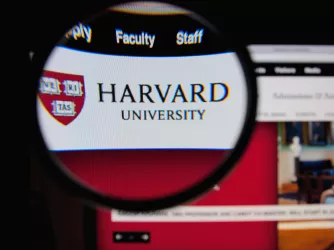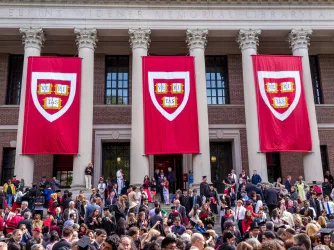Table of Contents
How UC Davis’s Orwellian ‘Media Board’ can control student media

(Credit: Chris Allan / Shutterstock)
In 1970, the University of California Regents declared that they “deplore[d] the frequent use of campus student newspapers as instruments of socio-political advocacy and for the dissemination of lewd and obscene articles and photographs.”
Something had to be done about student media.
UC Davis answered this call by creating the Media Board, a committee of individuals appointed by the Chancellor and tasked with ensuring student media content conforms to administrative expectations.
Incredibly, the UC Davis Media Board — and its unconstitutional control over the student press — lives on today. But in a letter to UC Davis yesterday, FIRE and the Student Press Law Center asked the university to do away with it for good.
Authority to crack down on content
Per its current operating guidelines, the board has the authority to police UC Davis’ student newspaper, The California Aggie, and student radio station, KDVS, to ensure that they “serve the general campus community,” “serve the interests of the students,” and “use propriety and good taste in expression.” The board’s portfolio also authorizes it to investigate third-party complaints about student media.
Of course, each of these responsibilities relates directly to content, as expression does not lose its protection simply because others find it offensive, would prefer to see different content, or believe it is in “bad taste.” Giving third parties a means to officially complain about student media mirrors the risks FIRE often sees with bias response teams — this type of process offers critical readers and listeners the ability to wield administrative power to silence controversial expression in the student newspaper and radio station.
Make no mistake about it, the Media Board’s power is that of the administration.
Yesterday, FIRE and the Student Press Law Center wrote to UC Davis, explaining that the board’s power to control student media offends both the First Amendment and California law. Courts — including the Supreme Court and the Ninth Circuit — have long held that public university administrators may not exert control over the content of student media. Yet that’s exactly what the UC Davis Media Board scheme allows.
Make no mistake about it, the Media Board’s power is that of the administration. While the Board is made up of three students and two faculty or staff members, members are appointed by and are delegated authority by the Chancellor, who ultimately oversees the actions of the board.
Giving it further authority over student media, the board also chooses student media leaders each year and retains the power to fire these leaders. This power over personnel necessarily encompasses power over content, as the goals of newspaper editors and radio managers usually set the tone for the media they lead.
Ultimately, given the board’s history, there is no question that it was created to squelch publication of dissent and unpopular viewpoints in what are supposedly independent student media. Unfortunately, that legacy continues.
Chilling the press
At the time of the Media Board’s inception in 1971, then-student journalist Paul Goodman wrote in The Aggie, “The new Media Board is a carbon copy of the devices perfected in the days of McCarthyism[,] a generation age to silence and intimidate student newspapers, but avoiding the onus of direct censorship by inducing self-censorship.”
In other words, the act of establishing the board created a chilling effect, making student journalists — who could see their editors fired or otherwise disciplined by the board — fearful to report on controversial issues. As long as the board remains in place, so too will this chilling effect, as recent events demonstrate.
In April, when the board decided to interview editorial candidates for The Aggie without the board’s requisite five voting members (in violation of its own operating guidelines), current Aggie editor Kaelyn Tuermer-Lee said she was initially hesitant to push back. She feared losing her job.
The paper ultimately decided to publish an editorial raising these concerns, but not without caution. Tuermer-Lee said The Aggie took care to word its editorial gently in order to avoid retaliation. (The Board, for its part, initially promised to involve Tuermer-Lee in determining who will take her place when she graduates at the end of the semester, but then reneged on that promise after the editorial was published, moving forward with interviews without even telling her.) This is, unfortunately, an example of the chilling effect at work.
Restoring integrity to UC Davis’ approach to student media
In addition to its censorial obligations, the Media Board is also responsible for “maintain[ing] editorial freedom” for The Aggie and KDVS. As FIRE and SPLC wrote in our letter, this is a laudable goal that will surely be undermined so long as the board serves as “an instrumentality of the UC Davis administration to police the content of the student media, leaving the watched to determine their watchdog.”
That 1970s UC Davis student journalist Goodman said it best:
Yet even when student [newspapers] occasionally go astray, it is far better in a society professing to be democratic to keep the press unfettered rather than impose controls for the sake of preventing any lapses. Such lapses are the price we sometimes have to pay to avoid the far greater evil[:] censorship.
UC Davis must live up to its obligations under the First Amendment and California law by eradicating the Media Board and leaving student journalists to determine the content of their own media.
Recent Articles
FIRE’s award-winning Newsdesk covers the free speech news you need to stay informed.

Revoking Harvard’s tax-exempt status will threaten all nonprofits

Grandpa’s advice for the new wave of American censors

FIRE POLL: Only 1/4 of Americans support deporting foreigners for pro-Palestinian views
